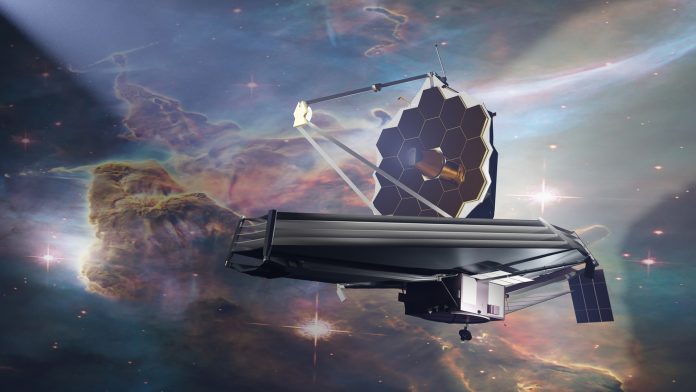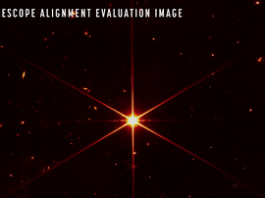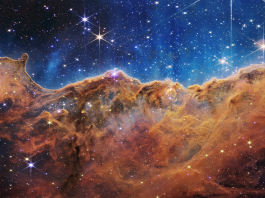The Innovation Platform Editor Georgie Purcell speaks to Günther Hasinger, Director of Science at ESA, to discuss the spectacular images released by the James Webb Space Telescope.
Launched on Christmas Day 2021, the James Webb Space Telescope (JWST, Webb) is an international collaboration between the National Aeronautics and Space Administration (NASA), the European Space Agency (ESA), and the Canadian Space Agency (CSA), designed to answer outstanding questions about the Universe.
Successor to the Hubble Space Telescope (HST, Hubble), Webb will set out to find the first galaxies that formed in the early Universe and peer through dusty clouds to see stars forming planetary systems. The immense capabilities of the James Webb Space Telescope are largely due to its four scientific instruments: the Mid-Infrared Instrument (MIRI), the Near-Infrared Camera (NIRCam), the Near-Infrared Spectrograph (NIRSpec), Near-Infrared Imager and Slitless Spectrograph/Fine Guidance Sensor (NIRISS/FGS).
In arguably the most exciting development since its launch, Webb’s first full-colour images were released on 12 July during a live broadcast from NASA’s Goddard Space Flight Center. The first observations were selected by a group of representatives from NASA, ESA, CSA, and the Space Telescope Science Institute (STScl) and demonstrate the full power of all four of Webb’s instruments.
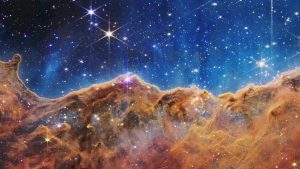
Just days after the release of these images, The Innovation Platform Editor Georgie Purcell spoke to ESA’s Director of Science, Günther Hasinger, to find out what the images could mean for our understanding of the Universe.
Can you start by outlining what the most significant developments have been from the release of the first images from Webb?
The images are fantastic. We have already been spoilt by many years of wonderful, colourful images from the Hubble Space Telescope. On first view, the new images look beautiful but appear no more Earth-shaking than the Hubble images. However, when you do a detailed comparison between what Hubble saw and what the James Webb Space Telescope is now capturing, it is clear that there is much more information, brilliance, and depth in the Webb images.
There are certain things that we did not know before that Hubble could not see that Webb now can. This is the real power.
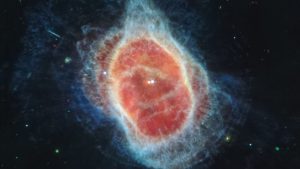
© NASA, ESA, CSA, and STScI
What capabilities does JWST have that allows for better images than what Hubble was able to obtain?
James Webb is an infrared telescope that looks at different wavelengths than Hubble did. Its infrared capabilities enable it to look through veils of gas and dust clouds.
The JWST also has a much larger mirror than Hubble with a larger area, enabling it to look back in time much further than Hubble could. In addition, JWST is a cold telescope that does not radiate, making it around 100 times more sensitive than Hubble.
When it comes to studying exoplanets – tiny little dots next to a very bright star – the star has its maximum light in the visible while the planet has its maximum light in the infrared spectrum. So, if we are observing in the infrared, the ratio between the planet and the star is getting better and James Webb also has a much sharper image. Therefore, in planetary studies, it can be almost 10,000 times better.
What can these images tell us that we did not know before?
If we break it up into the different images, the first is the beautiful and colourful image of the star-forming region in the Carina Nebula. The image depicts a thick wall of gas and dust standing in front of a cluster of freshly born stars that shine through the wall. The new and still unborn stars are in the cloud and James Webb is able to look through the cloud and see its structure, identifying exactly where the newborn stars are. Hubble could not do this.
The second image is of the planetary nebula catalogued as NGC 3132 and known informally as the Southern Ring Nebula. This colourful round structure looks fascinating. In comparison to Hubble, James Webb allows us to see much more structure both very far away in the outskirts of the nebula but also inside. It has only been realised recently that this is actually a double star system which is in the centre of this planetary nebula. One star has grown a gas bubble and the other star is now moving around the gas bubble, influencing the nebula’s appearance.
The third image of Stephan’s Quintet shows five galaxies. Four of the galaxies are dancing around each other and the fifth is in the foreground. To me, this resembles an image of five women dancing. One galaxy is moving through the cluster in a very rapid fashion, creating a structure that is only visible by the JWST – a so-called ‘shock structure’ never seen before by Hubble. This tells us how galaxies are transforming by merging with and harassing each other.
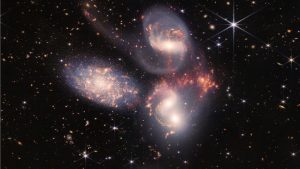
© NASA, ESA, CSA, and STScI
The last picture was unveiled by President Biden and is another cluster of galaxies. This cluster, however, is one of the biggest that we know of in the Universe and consists of around 1,000 galaxies. We know that there is a lot of dark matter, and the predominant part of the Universe is dark matter. The galaxies are swimming in a sea of dark matter and the dark matter is acting as a gravitational lens, lensing the galaxies in the background. Then you see fascinating arc-like structures which almost look like the image is rotating around the cluster. These are galaxies which are very far in the distance, much further away than the cluster itself. Some of these galaxies are so far away that they could be the oldest light that we have seen. This is exactly what JWST was made for – to see the very first starlight in the Universe.
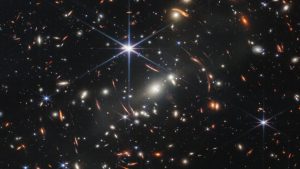
© NASA, ESA, CSA, and STScI
Does the clarity of these images offer hope for future discovery? Are we closer to finding habitable planets beyond our Solar System?
We have to realise that this is just five days of data – so it is just the beginning. Even whilst we are talking, new discoveries are being made and new data is being recorded that will lead to new discoveries. The fact that, in such a short time, we have already had so much information that is better than Hubble which observed for 34 years, is fascinating in itself. I am expecting many more discoveries.
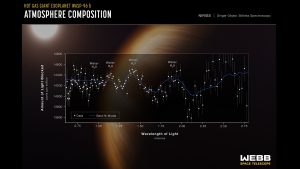
© NASA, ESA, CSA, and STScI
I have not yet talked about the spectrum of the exoplanet atmosphere that Webb has also published. Webb is able to measure the chemical composition of exoplanet atmospheres by letting the starlight shine through it and then measuring the fingerprint of molecules that are in the atmosphere of these exoplanets. The first measurement is a Jupiter-sized exoplanet, which is relatively close to its star, making it fairly easy to observe. We have found water molecules in the atmosphere of this planet, indicating that there is water vapour, potentially clouds, on the top surface of this exoplanet. That is interesting as previous analyses made with the HST suggested that there is no water. This is just the first glimpse but, in principle, we could look for molecules that are indicative of whether a planet is habitable or not.
What are the next steps for ESA’s role in the JWST mission?
The observing time on James Webb is allocated competitively. Anyone can write a proposal which is then reviewed by peer review committees. Typically, the oversubscription rate is about a factor of ten, so there are ten times more proposals than actually can be observed. It is, therefore, always a big prize if you win observing time for the JWST observations.
The first year of observing time was selected and distributed around 18 months ago. In Europe, we were very surprised but happy that 30% of the first year was delegated to European observers.
Over the next year, many hundreds of scientists will be busy obtaining and analysing data, and hopefully publishing their papers.
Günther Hasinger
Director of Science
European Space Agency (ESA)
www.esa.int
https://www.linkedin.com/company/european-space-agency/
https://www.facebook.com/EuropeanSpaceAgency
https://twitter.com/esa
Please note, this article will also appear in the eleventh edition of our quarterly publication.

